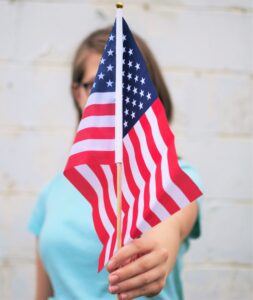Truths to be aware of as you complete your DS-260
I’ve indicated this a million times: it’s quite important that Diversity Visa applicants get educated in the process after selection. Not only will that reduce their confusion along the way, it will also contribute a lot to the success of their case.
In this article, I provide a number of truths related to DS-260 submission which Diversity Visa applicants should be aware of as they complete the form.
1. The DS-260 is your official application to the US Government for your Diversity Visa(s)
You may have been selected in the Diversity Visa Lottery, but that’s not sufficient to be issued a Diversity Visa. There’s a list of other ‘duties’ you must accomplish. The first of those duties is to submit an official application expressing your intention to immigrate to the US (as a Diversity immigrant). That is achieved by completing and submitting the US Department of State’s Form Ds-260.
2. You must complete and submit DS-260s for ALL eligible family members
A DS-260 MUST be filled out and submitted for everyone who is to emigrate to the United States. This includes you – the principal applicant – and your spouse and eligible children as appropriate.
For cases where all eligible family members were on the DV entry, there’s usually no problem. A DS-260 is made available for each one when you log in to the form online.
The problem usually occurs when new eligible family members – created by marriage or birth – are to be added to the case. If you got married or had a child after you entered the Lottery, you are to add them to your case by using the ADD APPLICANT button located at the top of the summary information page after you log in to the DS-260.
Not adding eligible members who joined your family after you entered the Lottery results either in Administrative Processing – in the best of cases – or outright refusal – in cases where the CO is not considerate enough.
3. Adding ineligible members to your case will disqualify you
This is a no-no! Do that, and you’ll get outright refusal. Unfortunately, many Diversity Visa applicants are not aware of this reality. They enter the Lottery without their spouse or children below 21 years old. And once selected, they think it’s an opportunity for the whole family. They then add their family members who existed but who were not included when they entered the Lottery.
Another case that occurs is where an individual enters the Lottery with persons who were not eligible. And once selected, they fill out DS-260(s) for everyone. And then they realize at their interview that such persons were ineligible to enter the Lottery alongside them. Both of these cases result in refusal at Diversity Visa interviews.
4. Interview scheduling is by case number – not DS-260 submission
I have sung this song so many times in previous articles that I think I don’t need to provide details here. This is just the core truth about the Diversity Visa application process.
5. Information submitted in DS-260s is reviewed – and verified
As part of the processing of DS-260s, KCC examine information contained in DS-260s and if necessary background checks are carried out to ascertain declarations made in the form.
One piece of information requested in the form is social media accounts used during the previous five years. A visit to an applicant’s social media page is sufficient to authenticate claims he/she made in their DS-260. Applicants have been refused visas on grounds that the information presented in their DS-260 did not match with what their social media account was suggesting.
Have you ensured that there is consistency in the information contained in your DS-260 as compared to what you’ve posted on social media during the last five years? A hint to the wise!
6. After submission, you can not edit your DS-260 unless KCC reopens it
Once you’ve submitted your DS-260, you’ll need to ask KCC to unlock it before you can make any changes. And generally, content that is modified will be matched against the original in search of discrepancies. If the modification was a dishonest one, it will be flagged and could be the subject of discussion at your interview.
7. Information contained in your DS-260 constitute the basis of your interview
I have seen places where a so-called list of interview questions is presented for Diversity Visa applicants to consider before attending their interview. That’s absolute nonsense! There’s no such thing as a list of possible Diversity Visa interview questions.
In the same way that no two lives have the same story, no two Diversity Visa cases follow the same course. And no two Diversity Visa interviews contain the same questions. Questions asked at DV interviews are based on the information submitted in one’s DS-260 as well as others ‘discovered’ from other sources. Does it make sense that the same questions be asked to every applicant when in fact each one’s DS-260 contents are different from all others?
Listen to this
From my experience working with Diversity Visa applicants, I can boldly tell you this: As long as the information obtained or discovered by KCC and the CO is reasonable and straightforward, the applicant can rest assured of success at their interview. But if the opposite is the case, that’s when they’ll be required to prove or disprove one piece of information or another.
That has led me to saying: The fate of a Diversity Visa case is determined before the interview is conducted.
DV Interview Mystery
And this explains why one applicant is asked to show proof of their educational qualifications, while another is chatted with – not in relation to their case but rather – about the attire they are wearing and subsequently requested by the CO to get her one – while handing her the amount it costs – when she’s returning to pick up her visa the following week.
Sounds strange right? That’s part of the magic behind Diversity Visa interviews. The latter is what you witness when the ‘story’ presented in the DS-260 and that revealed by other sources contains zero discrepancy – when everything falls right in place.
In conclusion
What you’ve just read are truths regarding the application process that I wish all Diversity Visa applicants were aware of. There will even be more to discover if only they concern themselves with acquiring more knowledge of what lies ahead in this intriguing but ultimately rewarding learning process.



My Family and I have submitted our DS-260 for more than 3months now. precisely, 3months 1week. May I ask how long it usually takes for KCC to reply applicants after receiving the DS-260?
Can we contact the Embassy of America in our country of residence or do we just wait till whenever the response comes?
To answer your questions: KCC doesn’t reply to applicants after receiving their DS-260; and applicants don’t have any contact with the Embassy until their interview has been scheduled.
Now, hearing that you submitted your DS-260 3 months 1 week ago actually raises eyebrows. Which DV Program (year) were you selected for?
DV 2024 is the one I applied for.
Keep checking for your interview notification. However, you may have submitted your DS-260s a bit too late.
Hello
Me and my family Are refugees currently living in Uganda. How can we fill the Passpirt section in form Ds-260 because we dont have a Passport. We have refugee card but we dont have refugee travel document. The UNHCR office told as if we got invited to the interview they will give as the refugee travel document. So for now what should we put Info in the Passport section.
Hi Nasser:
Let the UNHCR Office know that the travel documents are currently needed – to fill out your DS 260s (Explain to them what the process entails). If they still refuse to issue the documents, then write to KCC, acquaint them with the situation, and ask them for the way forward.
Best of success!